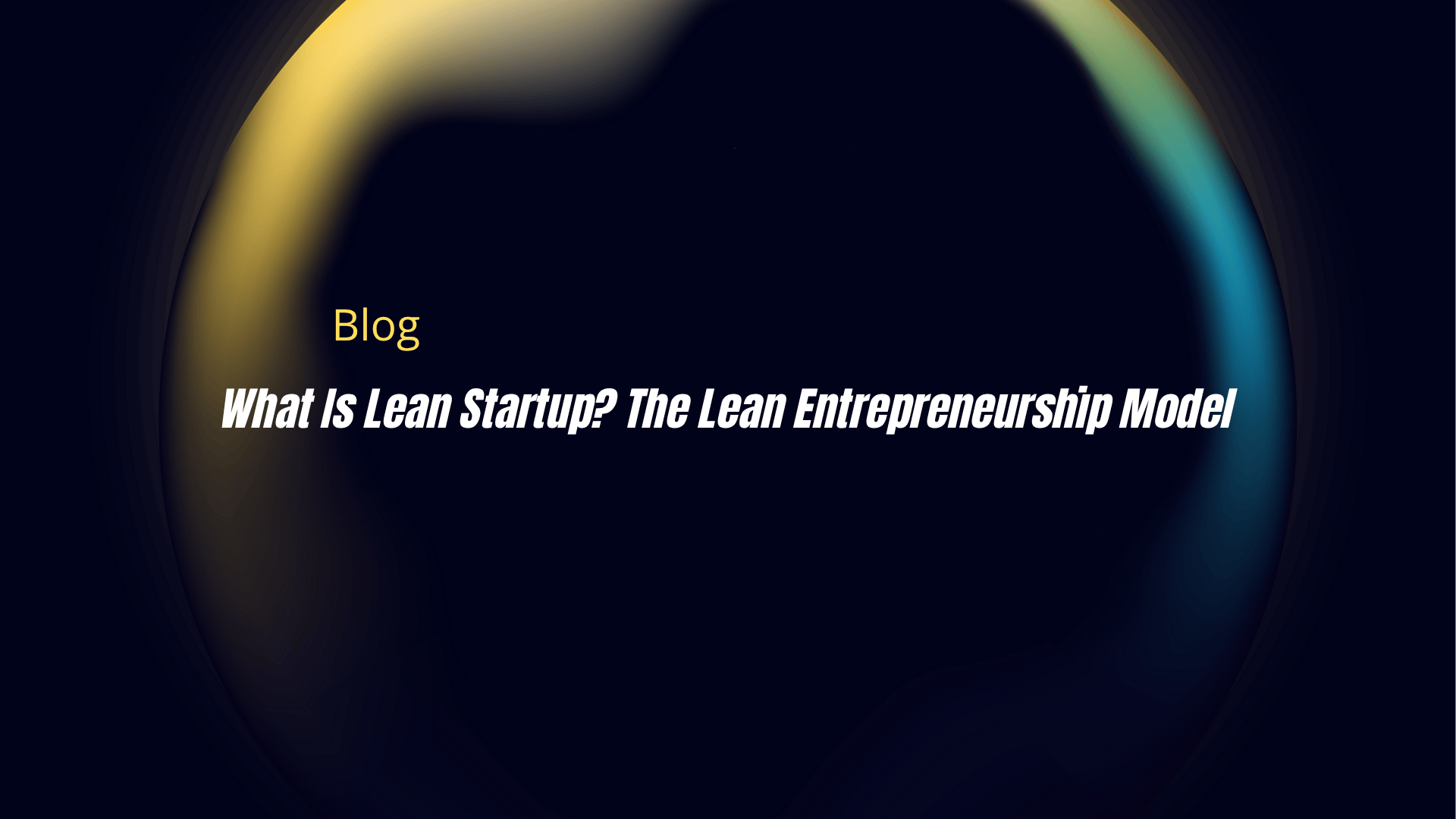
In today’s fast-paced world of entrepreneurship, speed, flexibility, and the ability to make the right decisions at the right time are crucial. The Lean Startup model is an approach designed for entrepreneurs who want to test business ideas quickly, use resources efficiently, and minimize the risk of failure.
Unlike traditional business planning, this model is built on experimentation, learning, and continuous improvement.
Lean entrepreneurship enables startups to move more agilely in uncertain environments. The goal is to test an idea on a small scale before making large investments, learn what the market truly needs, and determine the right direction based on real insights.
What Is a Lean Startup?
The Lean Startup is an entrepreneurial methodology developed by Eric Ries. At its core lies the principle of learning more with fewer resources.
This approach allows entrepreneurs to test their ideas in the market, develop products based on real user feedback, and avoid unnecessary spending.
The Lean Startup model replaces long, static business plans with a mindset of “build, measure, learn.” Instead of spending months planning, startups are encouraged to launch quickly, gather feedback early, and pivot strategically when necessary.
Core Principles of the Lean Startup Model
The Lean Startup model is based on three key principles: MVP (Minimum Viable Product), the Build–Measure–Learn Loop, and Rapid Testing and Validation.
MVP (Minimum Viable Product)
An MVP, or Minimum Viable Product, is the simplest and most testable version of a product.
The goal is to develop the core features of a product quickly, launch it to the market, and collect user feedback.
Through this process, entrepreneurs learn what customers truly need and avoid wasting time or resources on unnecessary features.
Build – Measure – Learn Loop
This loop is the heart of the Lean Startup approach. Entrepreneurs measure product performance, learn from the data they collect, and improve the product accordingly.
As this cycle repeats, the product becomes better aligned with the target audience. Every measurement brings a new learning opportunity, and each insight leads to a more effective iteration.
Rapid Testing and Validation
Instead of relying on long planning phases, Lean Startup promotes quick testing and validation.
Startups can test their hypotheses rapidly and adjust their strategies based on user feedback.
Fast validation reduces both costs and the risk of failure, allowing entrepreneurs to focus on what works.
How to Apply the Lean Startup Method
Applying the Lean Startup method involves several stages that strengthen the learning process and help test the market viability of a business idea.
Identifying the Problem and Target Audience
The first step is to clearly define the problem to be solved.
Entrepreneurs must understand the specific needs of their target audience and analyze whether their proposed solution truly creates value.
Developing the Solution and Building the MVP
Once the problem is defined, a prototype that offers the simplest viable solution is created.
This MVP allows entrepreneurs to enter the market quickly and collect initial user reactions.
Collecting Feedback and Making Improvements
After the MVP is launched, user feedback is gathered and analyzed.
Entrepreneurs can then identify which features work well and which need improvement.
If necessary, they can pivot—make strategic changes to their direction—to achieve a better product-market fit.
Advantages of the Lean Startup Model
The Lean Startup model offers significant advantages, especially for startups with limited resources.
One of the biggest benefits is time and cost efficiency.
Entrepreneurs can test whether their ideas have market potential before committing to large investments.
The model also promotes a customer-centric mindset.
By continuously collecting feedback during the product development process, startups can achieve better product–market alignment, increase customer satisfaction, and strengthen their growth potential.
Another key advantage is the culture of rapid learning.
Entrepreneurs are encouraged to experiment without fear of failure, learn from mistakes, and move forward with stronger strategies.
Differences Between Lean Startup and Traditional Entrepreneurship
Traditional entrepreneurship emphasizes long-term planning, large budgets, and detailed analysis.
The Lean Startup approach flips this perspective—it focuses on execution and learning rather than extensive planning.
In traditional models, the philosophy is “plan first, then execute,” whereas in Lean Startup it becomes “experiment first, then learn.”
This difference enables startups to adapt more quickly to uncertain market conditions and make flexible, data-driven decisions.
Successful Examples of the Lean Startup Model
Lean Startup principles have contributed to the success of many ventures around the world, including in Türkiye.
For example, some technology startups test user interest by launching a simple landing page or demo before developing a full product.
Others experiment with a small group of users to validate their assumptions and use feedback to guide their development process.
This approach allows entrepreneurs to preserve resources while gaining a deeper understanding of actual market needs.
Ultimately, the Lean Startup model provides a learning-oriented roadmap that increases the likelihood of entrepreneurial success.